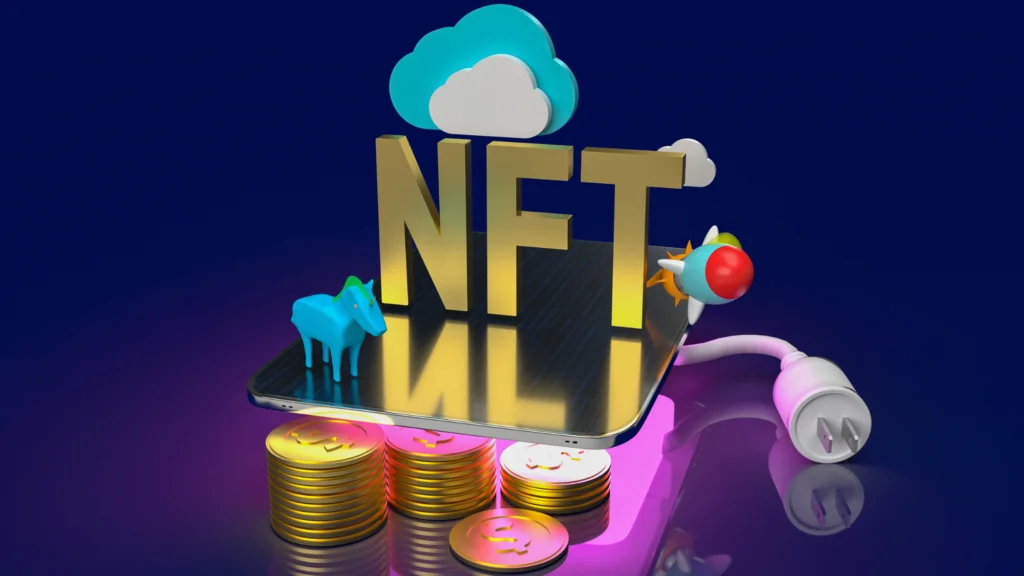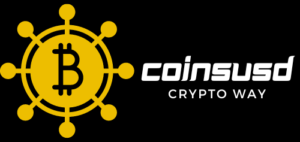NFTs (Non-Fungible Tokens) and Web3
Table of Contents

NFTs, or Non-Fungible Tokens, are a type of digital asset that represents ownership of a unique item or piece of content. Unlike cryptocurrencies such as Bitcoin or Ethereum, which are fungible and can be exchanged on a one-to-one basis, NFTs are one-of-a-kind. Each NFT has distinct information or attributes that make it unique, meaning it cannot be directly replaced by another token. Think of NFTs as digital certificates of authenticity, often used to verify ownership of digital art, collectibles, and more.
Web3, on the other hand, refers to the next generation of the internet, which is built on decentralized technologies such as blockchain. Unlike the current Web2, which relies on centralized servers and databases, Web3 aims to create a more open, transparent, and user-controlled Internet. It leverages blockchain to decentralize data storage and management, allowing users to have more control over their digital interactions and assets.
the Connection Between NFTs and the Decentralized Web (Web3)
NFTs and Web3 are deeply interconnected. The decentralized nature of Web3 provides the perfect environment for NFTs to thrive. Since NFTs are based on blockchain technology, they benefit from the security, transparency, and immutability that decentralized systems offer. In Web3, NFTs can be used not only to represent digital art but also to manage and verify ownership of various digital and physical assets.
Web3’s decentralized infrastructure ensures that NFTs are not controlled by a single entity but are distributed across a network of computers. This decentralization makes it harder for data to be tampered with or lost, ensuring the authenticity and ownership of NFTs remain secure. As Web3 continues to evolve, the applications of NFTs are expanding beyond digital art to areas like gaming, real estate, intellectual property, and identity verification.
Exploring NFT Applications Beyond Digital Art
While NFTs are widely known for their role in the digital art world, their potential applications go far beyond this realm. This article aims to explore the diverse and innovative ways NFTs are being used in the Web3 space. From enhancing gaming experiences and revolutionizing real estate transactions to protecting intellectual property and verifying identities, NFTs are set to transform various industries.
By delving into these different applications, we will uncover how NFTs are paving the way for new opportunities and solutions in a decentralized digital landscape. Whether you’re a tech enthusiast, an entrepreneur, or simply curious about the future of the internet, this article will provide valuable insights into the multifaceted world of NFTs in Web3.
1. The Basics of NFTs and Web3
Understanding NFTs
Definition and Characteristics of NFTs
NFTs, or Non-Fungible Tokens, are special digital assets that represent ownership of a unique item or piece of content. What makes them unique is their non-fungibility, meaning each NFT is one-of-a-kind and cannot be exchanged on a one-to-one basis with another NFT. NFTs can be anything digital, like artwork, music, videos, or even tweets. They are stored on a blockchain, which is a decentralized digital ledger, ensuring that each NFT is verifiable and cannot be duplicated.
How NFTs Differ from Fungible Tokens
Fungible tokens, like cryptocurrencies (e.g., Bitcoin or Ethereum), are identical and can be exchanged for one another at equal value. For example, one Bitcoin is always equal to another Bitcoin. In contrast, NFTs are unique and cannot be exchanged on an equal basis. Each NFT has its own value based on its uniqueness and the content it represents. This distinction makes NFTs ideal for representing ownership of unique items or pieces of content.
What is Web3?
Overview of Web3 and Its Key Principles
Web3 is the next evolution of the internet, focusing on decentralization and giving users more control over their data and digital interactions. Unlike Web2, which relies on centralized servers and services controlled by large companies, Web3 uses blockchain technology to distribute data across a network of computers. This makes Web3 more secure, transparent, and resistant to censorship.
Key Principles of Web3
- Decentralization: Data and services are distributed across a network rather than being controlled by a single entity.
- Blockchain: A digital ledger that records transactions across many computers so that the record cannot be altered retroactively.
- User Sovereignty: Users have control over their own data and assets, reducing the power of intermediaries.
The Role of Smart Contracts in Web3
Smart contracts are self-executing contracts with the terms directly written into code. They automatically enforce and execute the terms of an agreement when predefined conditions are met. In Web3, smart contracts enable trustless transactions and interactions without the need for intermediaries. They are a fundamental building block of decentralized applications (dApps), allowing for secure and automated transactions of NFTs and other digital assets.
2. NFTs in Gaming
In-Game Assets and Virtual Realities
How NFTs Are Used for In-Game Assets
In the gaming world, NFTs are revolutionizing how in-game assets are owned and traded. Items like skins, weapons, and virtual land can be turned into NFTs, giving players true ownership of these digital assets. Unlike traditional in-game items that are controlled by the game developers, NFT assets can be bought, sold, and traded outside the game environment, creating a real-world value for virtual items.
Examples of Popular Games Utilizing NFTs
- Axie Infinity: A game where players collect, breed, and battle fantasy creatures called Axies. Each Axie is an NFT, and players can earn rewards in the form of cryptocurrency.
- Decentraland: A virtual world where users can buy, sell, and build on virtual land plots, each represented by an NFT. Players can create and monetize their content within this digital space.
Play-to-Earn Models
Explanation of Play-to-Earn Models
Play-to-earn models allow players to earn real-world rewards through their in-game activities. In these models, players can earn NFTs or cryptocurrencies by completing tasks, winning battles, or participating in the game’s economy. This model transforms gaming from a leisure activity into a potential source of income.
Case Studies of Games That Have Successfully Implemented Play-to-Earn
- Axie Infinity: Players earn tokens called Smooth Love Potion (SLP) by playing the game, which can be traded for other cryptocurrencies or real money. This has created a new economic model where players, especially in developing countries, can earn a significant income.
- The Sandbox: A virtual world where players can create, own, and monetize their gaming experiences using NFTs and the platform’s cryptocurrency, SAND. Players can earn by selling their creations or participating in the in-game economy.
3. NFTs in Real Estate
Tokenized Real Estate
Concept of Tokenizing Real Estate Properties Using NFTs
Tokenizing real estate means turning the ownership of a property into a digital token, specifically an NFT, on a blockchain. This NFT represents a share or a whole of the real estate property. By doing this, real estate ownership can be easily divided, transferred, and managed digitally. This concept brings the traditional real estate market into the digital age, making transactions faster and more efficient.
Benefits of Real Estate Tokenization
- Liquidity: Traditionally, real estate is a highly illiquid asset because it can take a long time to sell a property. Tokenization allows property owners to sell fractions of their real estate as NFTs, providing liquidity and enabling investors to quickly buy or sell their shares.
- Fractional Ownership: Tokenization makes it possible to own a portion of a property rather than the whole. This lowers the barrier to entry for investors who might not have enough capital to purchase an entire property but can invest in a fraction.
- Transparency: Using blockchain technology, every transaction is recorded and immutable, providing a transparent and secure history of ownership. This reduces fraud and increases trust among buyers and sellers.
Case Studies and Examples
Real-World Examples of Real Estate Projects Using NFTs
- Propy: Propy is a real estate platform that uses blockchain technology to streamline property transactions. It has successfully conducted several real estate sales using NFTs to represent property ownership, making the process faster and more transparent.
- Ubitquity: Ubitquity offers a blockchain platform for real estate transactions, aiming to enhance title management and reduce fraud. It tokenizes property records, providing secure and verifiable ownership data on the blockchain.
4. NFTs and Intellectual Property
Digital Rights Management
How NFTs Can Represent Ownership and Rights to Digital Content
NFTs can be used to represent ownership and control rights over digital content such as music, videos, and articles. By embedding digital rights into an NFT, creators can prove ownership and set terms for how their work can be used or distributed. This provides a new layer of security and authenticity for digital content.
Protecting Intellectual Property Using NFTs
NFTs offer a way to protect intellectual property (IP) by creating a verifiable record of ownership on the blockchain. This ensures that the original creator’s rights are preserved and easily provable, reducing the risk of unauthorized use or piracy.
Licensing and Royalties
Smart Contracts for Automatic Licensing and Royalty Distribution
Smart contracts are self-executing agreements coded on the blockchain. For NFTs, smart contracts can automate the process of licensing and royalty distribution. When someone purchases or uses the content, the smart contract automatically enforces the terms of the agreement, ensuring that the creator receives the agreed-upon royalties without intermediaries.
Examples of Platforms and Creators Using NFTs for IP Management
- Audius: A decentralized music streaming platform where artists can release music as NFTs. Smart contracts ensure artists receive royalties directly, without the need for record labels or other intermediaries.
- Foundation: A platform for digital artists to sell their work as NFTs. Each sale includes a smart contract that handles payments and royalties, ensuring artists are compensated fairly for their creations.
5. NFTs for Identity Verification
Decentralized Identity Solutions
How NFTs Can Be Used for Identity Verification in the Digital World
NFTs can represent digital identities by storing unique information about a person on the blockchain. This allows individuals to have a verifiable, tamper-proof digital identity that can be used across various platforms. When you create an NFT for your identity, it contains data that is unique to you, such as your personal information, credentials, and other identifiers. This digital identity can then be used for secure logins and transactions without needing multiple passwords or third-party verification services.
Benefits of Using NFTs for Identity
- Security: Blockchain technology ensures that your identity data is encrypted and securely stored, making it extremely difficult for hackers to access or alter your information.
- Privacy: You have control over your own identity data, deciding what information to share and with whom. This reduces the risk of data breaches and misuse of personal information.
- Control: Users maintain full ownership of their identity data, without relying on centralized entities like banks or government agencies. This decentralization empowers individuals to manage their digital identities independently.
Applications and Use Cases
Real-World Examples and Potential Applications
- Secure Login: Using NFTs for logging into websites and apps provides a secure and streamlined way to access services without needing traditional usernames and passwords. An NFT-based login can verify your identity instantly and securely.
- Credential Verification: Educational institutions and employers can issue NFTs as verifiable credentials. For example, a university can issue a degree as an NFT, which can then be easily verified by potential employers.
- Digital Passports: NFTs can function as digital passports, storing all necessary identification data securely on the blockchain. This can simplify travel and reduce the risk of identity fraud.
6. The Future of NFTs in Web3
Innovations and Emerging Trends
Upcoming Trends and Innovations in the NFT Space
- Interoperability: Future NFTs will likely be more interoperable, meaning they can be used across different platforms and applications seamlessly. This will enhance the user experience and expand the utility of NFTs.
- NFT-Fi: The integration of NFTs with decentralized finance (DeFi) platforms, allowing NFTs to be used as collateral for loans or to earn interest.
- Virtual Reality Integration: NFTs will increasingly be used in virtual and augmented reality environments, creating new possibilities for digital assets and experiences.
Potential Future Applications of NFTs Beyond the Current Scope
- Healthcare Records: NFTs could be used to store and manage healthcare records securely, giving patients control over their medical data and facilitating easy sharing with healthcare providers.
- Supply Chain Management: NFTs can track the provenance and authenticity of products in the supply chain, ensuring transparency and reducing fraud.
- Voting Systems: Implementing NFTs in voting systems can enhance security and transparency, making elections more reliable and tamper-proof.
Challenges and Considerations
Challenges Faced by the NFT Ecosystem
- Scalability: As the popularity of NFTs grows, the underlying blockchain networks need to handle more transactions efficiently. Current blockchains can struggle with high demand, leading to slow transaction times and high fees.
- Environmental Concerns: The energy consumption of blockchain networks, especially those using proof-of-work consensus mechanisms, has raised environmental concerns. Reducing the carbon footprint of NFTs is a key challenge.
- Legal Issues: The regulatory landscape for NFTs is still evolving. Questions about intellectual property rights, tax implications, and consumer protection need clear legal frameworks.
Strategies to Address These Challenges
- Layer 2 Solutions: Utilizing layer 2 solutions and sidechains can help improve scalability by offloading transactions from the main blockchain, reducing congestion and fees.
- Proof-of-Stake Consensus: Transitioning to more energy-efficient consensus mechanisms, like proof-of-stake, can significantly lower the environmental impact of NFTs.
- Regulatory Collaboration: Engaging with regulators to develop clear guidelines and legal standards will help ensure the growth and legitimacy of the NFT ecosystem.
Conclusion
Summary of Key Points
Throughout this article, we’ve explored how NFTs, or Non-Fungible Tokens, are revolutionizing various industries beyond digital art. Here’s a quick recap:
- NFTs and Web3 Basics: We defined NFTs as unique digital assets and discussed how they fit into the decentralized web (Web3), which emphasizes user control, security, and transparency.
- NFTs in Gaming: NFTs are transforming gaming by enabling true ownership of in-game assets, facilitating play-to-earn models, and creating virtual economies.
- NFTs in Real Estate: Tokenizing real estate properties through NFTs offers benefits like liquidity, fractional ownership, and enhanced transparency.
- NFTs and Intellectual Property: NFTs are used for digital rights management, protecting intellectual property, and automating licensing and royalty distribution.
- NFTs for Identity Verification: NFTs can serve as secure, private, and user-controlled digital identities, with applications in secure logins, credential verification, and digital passports.
These applications demonstrate the transformative potential of NFTs across various sectors, providing new opportunities and efficiencies.
The Future Outlook
The future of NFTs in the evolving Web3 landscape looks promising. As technologies advance and new use cases emerge, NFTs will continue to play a crucial role in decentralizing and democratizing digital ownership and interactions. Innovations like interoperability, integration with decentralized finance (DeFi), and virtual reality applications will further expand the utility and impact of NFTs.
There’s immense potential for NFTs to revolutionize industries beyond their current scope, including healthcare, supply chain management, and voting systems. However, challenges such as scalability, environmental concerns, and legal issues need to be addressed to ensure sustainable growth and adoption.
We invite you to share your thoughts and experiences with NFTs. How have you seen NFTs used beyond digital art? What potential applications excite you the most? Your insights and stories can enrich the discussion and help others understand the diverse possibilities of NFTs.
The world of NFTs and Web3 is rapidly evolving. Stay informed about the latest developments, trends, and innovations by following industry news, participating in online communities, and exploring new projects. Continuous learning and engagement are key to staying ahead in this dynamic field.
Further Reading and Resources
To dive deeper into NFTs and Web3, here are some valuable resources:
- Articles and Research Papers:
- “The Rise of NFTs: What You Need to Know” by Blockchain Research Institute
- “Web3: The Decentralized Internet” by ConsenSys
- Platforms and Communities:
- OpenSea – A leading marketplace for NFTs
- Ethereum – The blockchain platform powering many NFT projects
- Decentraland – A virtual world using NFTs for virtual real estate and in-game assets
Exploring these resources will provide you with a deeper understanding of the exciting world of NFTs and how they are shaping the future of the digital landscape.

